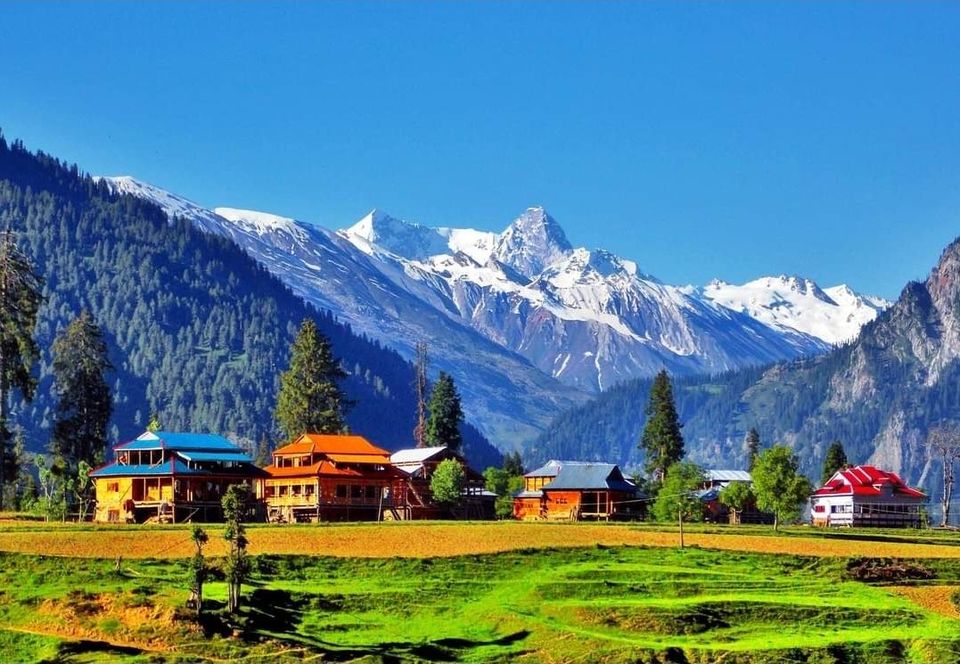Dr Bilawal Kamran
Source: UN website
When we drink a glass of water, write in a notebook, take medicine for a fever or build a house, we do not always make the connection with forests. And yet, these and many other aspects of our lives are linked to forests in one way or another.
Forest sustainable management and its use of resources are crucial to combating climate change and contributing to the prosperity and well-being of current and future generations. Forests also play a pivotal role in poverty alleviation and achieving Sustainable Development Goals (SDGs). Yet despite all these priceless ecological, economic, social and health benefits, forests are endangered by fires, pests, droughts, and unprecedented deforestation.
The theme for 2023 is “Forests and health.”
Forests give us so much to our health. They purify the water, clean the air, capture carbon to fight climate change, provide food and life-saving medicines, and improve our well-being.
It’s up to us to safeguard these precious natural resources.
This 2023 calls for giving, not just taking, because healthy forests bring healthy people.
The United Nations General Assembly proclaimed 21 March the International Day of Forests in 2012 to celebrate and raise awareness of the importance of all types of forests. Countries are encouraged to undertake local, national and international efforts to organize activities involving forests and trees, such as tree planting campaigns.
The organizers are the United Nations Forum on Forests and the Food and Agriculture Organization of the United Nations (FAO), collaborating with Governments, the Collaborative Partnership on Forests and other relevant organizations.
Today, up to 40 per cent of the world’s land surface has been degraded, including 30 per cent of its cropland and 10 per cent of its pastureland.
In the last fifty years, the area of drylands in drought has increased on average by more than 1 per cent per year — mainly affecting countries in Africa and Asia. If we continue to misuse our land, we could degrade a surface area as vast as the size of South America by 2050.
When land is degraded, it impacts food security, water availability and ecosystem health, directly affecting half of humanity and causing a loss of about US$40 trillion worth of ecosystem services each year — nearly half of the global GDP of $93 trillion in 2021.
Land degradation is also considered “the single greatest cause of terrestrial biodiversity loss,” destroying the habitats of many animals and plants. Severe degradation, such as drought and desertification, can devastate communities, leading to social and economic instability. Up to 250 million people could be displaced by 2050 due to climate change-induced desertification.
How does land degradation impact climate change? It decreases the soil’s ability to store carbon. Moreover, when forests are cleared or burnt, they release their stored carbon. A 2018 UN report found that deforestation alone contributed about 10% of all human-induced greenhouse gas emissions.
Between 2000 and 2009, annual greenhouse gas emissions from degraded land accounted for up to 4.4 billion tonnes of carbon dioxide (CO2) emissions — in comparison, the global energy-related CO2 emissions were considered to reach their highest ever level in 2021 at 36.3 billion tonnes.
And as the planet warms, extreme weather events, including more prolonged and intense droughts, heavier rainfall leading to floods and landslides, and more frequent and severe tropical storms, worsen land degradation.
The IPCC warns that droughts will lead to soil erosion and reduced crop yields, while floods and landslides can destroy agricultural lands and infrastructure. Tropical storms can uproot trees and damage crops.
Heatwaves have caused significant agricultural losses in the world’s major breadbasket regions in the last few decades, with important consequences for global food security.
Additionally, climate change causes sea levels to rise, leading to coastal flooding and erosion. Such impacts have severe economic, social and environmental effects on countries and communities worldwide, and scientists caution that these impacts will only become more powerful in the future.
Without efforts to restore and protect land, nearly 70 gigatonnes more carbon would be emitted by 2050 due to land use change and soil degradation, representing approximately 17 per cent of current annual greenhouse gas emissions.
The economic gains from land restoration, including its impact on emission cuts and the prevention of biodiversity loss, could be significant, amounting to up to $140 trillion per year — 50 per cent more than the global GDP in 2021.
If we used just $1.6 trillion of the annual amount of $700 billion spent on subsidies for the fossil fuel and agricultural industries over the next ten years, countries would be able to restore some 1 billion degraded hectares of land — an area the size of the United States or China, including 250 million hectares of farmland.
The land also has a great potential to provide renewable energy — through bioenergy which is produced from various organic materials such as plant and animal matter. Bioenergy is one of the largest renewable energy sources globally, accounting for 55 per cent of renewable energy and over 6 per cent of the global energy supply.
It is also an essential source of employment, particularly in rural areas. The biofuels sector provides more than 2 million jobs globally and is expected to grow significantly in the coming years. However, high dependence on biomass, even with the development of improved equipment, can contribute to deforestation, degradation of soil quality and reduced biodiversity.
The intent of the day is essential for Pakistan. The forest area in Pakistan is far less than that requirement. Then, Pakistan is also vulnerable to environmental ramifications. Irregular rain patterns, unpredictable weather patterns, and especially flooding makes it essential that Pakistan enhance the forest areas throughout the country. Forests are a devolved subject now in Pakistan. Therefore, there is a need to build the capacity of the provinces to meet the challenges. Earlier, the PTI government decided to grow forests in Pakistan. The billion Tree tsunami was successful, although it faced multiple challenges. Lastly, Pakistan must implement the spirit of the international day of forests.https://republicpolicy.com/climate-change/

















































